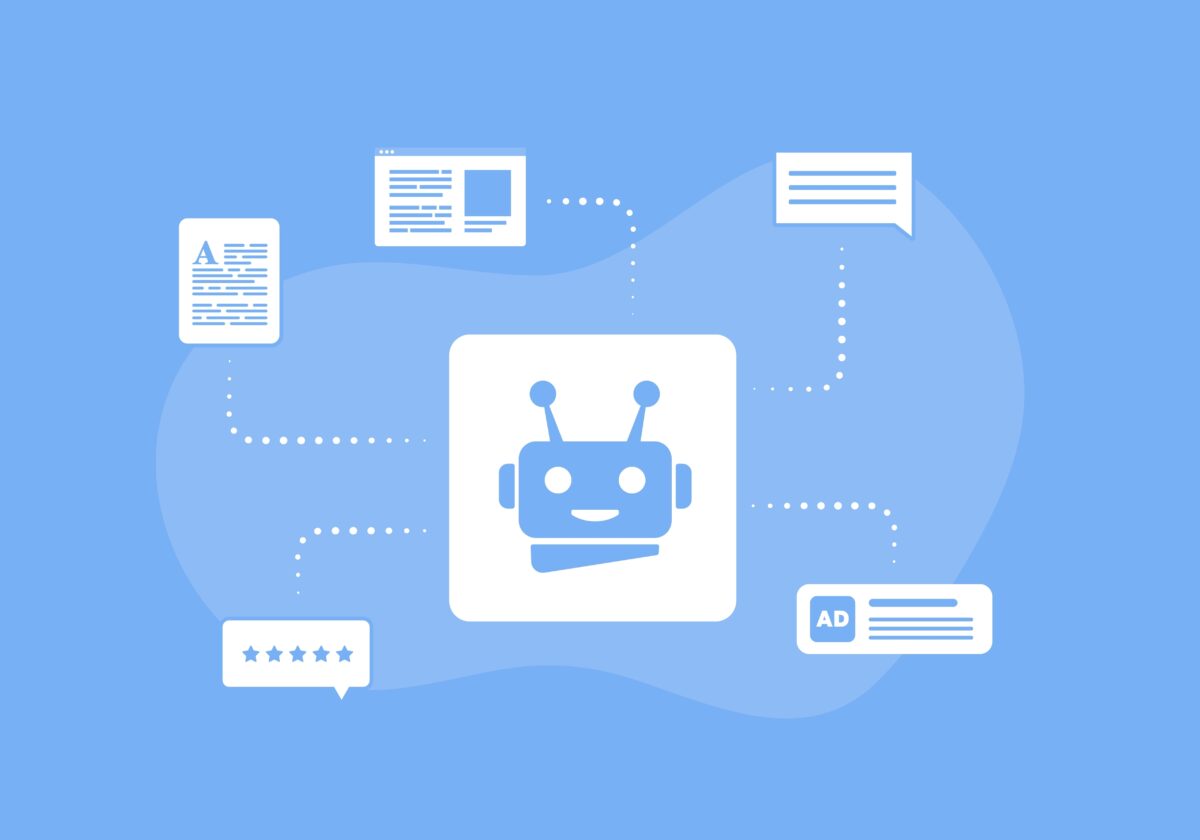
Making the Write Choice: Jasper versus ChatGPT for Content Writing
In today’s world, businesses need quality content to attract and retain customers. But generating content that is both creative and informative can be challenging.
The good news? There are tools available to help businesses produce high-quality content more efficiently. Specifically, these popular content writing tools are Jasper and ChatGPT.
In this post, we’ll compare the two and help you determine which one is right for your business’s content needs.
Factor 1: Features
Jasper is an AI-powered content-writing tool that generates articles, blog posts, and social media content based on user input. It has an intuitive interface and allows users to control the tone, style, and length of their content. It also offers SEO suggestions to improve the visibility of the content.
ChatGPT, on the other hand, is an AI language model that can answer questions and generate coherent responses based on user input. It can be used for content writing by generating ideas for topics, helping with research, and generating snippets of text that can be used in larger pieces of content.
In other words, Jasper was specifically designed with marketing in mind, whereas ChatGPT was created to serve more general purposes.
Factor 2: Ease of Use
We should first address how both Jasper and ChatGPT are user-friendly and easy to navigate.
For example, Jasper has a drag-and-drop interface that allows users to choose the type of content they want to create and then input the relevant information. ChatGPT, on the other hand, can be accessed through a web interface or integrated into other tools such as Slack or Microsoft Teams.
Of course, it still boils down to what, exactly, you’re looking to use a content AI for.
After all, Jasper offers numerous templates as well as brand voice features to help users easily generate content in the desired format or medium — for a cost. ChatGPT is free, albeit it features far fewer bells and whistles.
Factor 3: Customization
Based on the aforementioned, it’s easy to see how Jasper offers a high level of customization, allowing users to specify the tone, style, and length of their content. And while ChatGPT is less customizable, but it can still be useful for generating ideas and snippets of content that can be tailored to the specific needs of the business.
Simply put, for instant content generation, ChatGPT will do the job… you’ll just have to work harder to customize each piece of content in comparison to Jasper.
Overall, choosing the right content writing tool for your business is an important decision. But here at Mad Men Marketing, our copywriters have partnered with Jasper AI in order to create optimized content across all marketing platforms.
In other words, when you work with our team, you don’t need to decide between the two AI options; rather, you can rely upon the powerful blend of our human creativity and AI literacy.
So, are you ready to interact, rather than interrupt? If so, contact us today to learn more and get started!

5 Ways You Can Streamline Your Digital Media Planning with AI Solutions
Digital media planning can be a time-consuming and complex process, often requiring multiple tools and platforms to optimize advertising strategies. However, with the advent of artificial intelligence (AI), businesses can now streamline the process and achieve greater efficiency in their digital media planning.
Let’s explore some of the top AI solutions for digital media planning by examining their key features and how they can help businesses optimize their advertising strategies.
#1 — Programmatic Ad Buying
One of the biggest ways AI is transforming digital media planning is through programmatic ad buying.
Programmatic ad buying automates the process of buying and placing online ads, meaning it uses machine learning algorithms to optimize campaigns in real-time. This allows businesses to target their ideal audiences more effectively while reducing costs and improving ROI.
#2 — Predictive Analytics
Another key AI solution for digital media planning is predictive analytics. Predictive analytics allows businesses to use AI to analyze large amounts of data and predict future trends and outcomes.
By combining historical data and predictive modeling, businesses can make more informed decisions about their digital media strategies, such as when to invest in certain platforms or target specific audiences.
#3 — Automated Content Creation
AI-powered tools like automated content creation can also help businesses streamline their digital media planning by reducing the time and resources required to create content itself.
With tools like AI-generated headlines and copywriting, businesses can create compelling content quickly and easily, thereby freeing up resources for other aspects of their ongoing campaigns.
#4 — Real-time Analysis
AI tools can help businesses optimize their digital media planning in real-time, thus allowing them to adjust their digital campaigns based on immediate data and feedback.
In other words, with real-time analysis, businesses can quickly identify what’s working and what isn’t, allowing them to make adjustments in a timely manner to improve campaign performance.
#5 — Chatbots
Finally, chatbots are AI-powered conversational agents that can simulate human interactions with your customers, rendering their brand experience more personal and engaging.
These bots can be used in digital media planning to enhance customer service, create customized experiences, and drive engagement. Chatbots can help businesses to improve conversion rates, reduce response times, and increase customer satisfaction.
All in all, as digital media planning becomes increasingly complex and data-driven, AI solutions are becoming essential tools for businesses looking to optimize their marketing and advertising strategies. From programmatic ad buying to automated content creation, AI is helping businesses achieve greater efficiency, effectiveness, and personalization in their digital media planning!
By leveraging these AI-powered tools, businesses can gain a competitive edge in today’s fast-paced digital landscape, attracting and engaging their target audiences more effectively than ever before.
But if you’re not sure where to start, don’t worry — you don’t have to do it alone!
Here at Mad Men Marketing, both our digital team and copywriting department are literate in modern AI tools. Put simply? They’re ready to help you achieve sustainable growth through the industry’s most revolutionary technology!
After all, we are rooted in the belief that brands should interact with their customers, not interrupt them. And what better way to do so than by streamlining some of the most time-consuming processes that take you away from customers?
So, are you ready to interact? If so, contact Mad Men Marketing today by calling (904) 355-1766!

The Intelligent Move is The Integration of AI Into Advertising
“Of all a company’s functions, marketing has perhaps the most to gain from artificial intelligence,” according to the Harvard Business Review. “Marketing’s core activities are understanding customer needs, matching them to products and services, and persuading people to buy — capabilities that AI can dramatically enhance.”
And let’s face it: We’re living in an era where Artificial Intelligence (AI) is becoming increasingly commonplace across virtually every industry, from healthcare to customer service field operations.
Simply put, AI presents a unique opportunity for advertisers of all industries. But, how so? And does that mean we may soon be replaced by computer algorithms?
Let’s dive in…
Advantages of Integrating AI into Advertising
AI is becoming an increasingly attractive and powerful tool for the advertising industry. Specifically, AI technology can help businesses target their customers more accurately than ever before, giving them unique insights into their customer base that they are then able to leverage in a variety of ways.
From providing personalized experiences to optimizing ad spend and increasing conversions, AI integration provides marketers with an array of benefits. Additionally, it helps automate simple tasks like targeting which can free up a team’s time and be put towards higher-level strategic decisions.
As reported by Statista, nearly half of the respondents to a survey on consumer attitudes towards AI said that they would be more likely to interact with AI if it could provide them with a more “seamless, consistent, and convenient” customer experience.
In particular, customers increasingly want AI-driven advertising that is tailored to their specific needs and preferences. They want advertising that is highly personalized, relevant, and tailored to them as individuals.
Thus, the idea of AI integration just makes sense for those in advertising.
So, Will AI Replace Us?
Let’s take a look at one of the most common fields getting attention for AI use: copywriting.
AI is an incredibly powerful and useful tool for copywriters, but it will not replace them. This is because artificial intelligence and automation can help copywriters streamline their creative process, but AI is incapable of replacing the human element in writing.
After all, copywriting requires skills that AI simply can’t replicate, like…
- Creativity
- Critical thinking
- Problem-solving
- And more
Additionally, while AI can be an effective tool for accelerating performance and reaching customers with precision, it is essential that businesses fact-check the results they receive from AI-generated data and use the technology responsibly.
For example, “[ChatGPT] It can answer questions or prompts quickly in writing, which raises the question of how it might be used to spread misinformation in the coming years,” Poynter explains. “ChatGPT doesn’t provide any sources for the information it puts out, a clear red flag.”
Thus, copywriters are still necessary as they not only work with AI programs to enhance their writing, but they also need to act as fact-checkers and an immediate source of quality control.
What the Future Holds For AI and Advertising Integration
As the advent of artificial intelligence (AI) continues to permeate modern life, it is no surprise that this technology has made its way into the field of advertising. AI has been integrated with digital ad campaigns to create more tailored content and more efficient data analysis.
That said, it is expected that this integration will only continue to grow in the future.
In fact, research published in the International Journal of Engineering and Technology (IRJET) predicted in 2020 that “the total revenue for this technology is expected to increase from 7.4 billion US Dollars in 2018 to 89.85 billion in 2025.”
And given its recent explosion from 2022 to 2023, that number may continue to skyrocket.
But, what does this have to do with you? Simple: If you’re looking to take your advertising game to the next level, working with a marketing agency that utilizes AI is a no-brainer.
If you hire a marketing agency that stays ahead of the curve and utilizes the industry’s latest technology, you can trust that your marketing strategy will also put you ahead of your competitors — so why wait?
It’s time to partner up with an AI-savvy marketing agency, like Mad Men Marketing, whose copywriting and social media department utilize Jasper AI — one of the first generative AI platforms specifically designed to produce long-form content for business purposes.
And if you hadn’t already guessed, this blog post itself has been written by our Copy Chief with, you guessed it, Jasper AI!
So if you want to get your advertising campaigns off the ground quickly and effectively, call Mad Men Marketing today. We’re ready to help you leverage the cutting-edge power of AI-infused advertising in order to interact with your customers, rather than interrupt them.
So, are you ready to interact? If so, contact Mad Men Marketing today by calling (904) 355-1766!

5 Insights on Intellectual Property
Most of us, at one point or another, have seen those small encircled letters accompanying a logo or design. Well, that letter is a symbol denoting one’s intellectual property. Intellectual property, or IP, is something one creatively contrives. This could be a work of art, a tagline, a logo, or an invention. There are five types of IP that are most commonly used.
-
Copyright
A copyright is one of the most commonly used types of intellectual property, which protects the original work of the creator. This covers a wide spectrum of mediums including paintings, illustrations, photos, music, apps, books, movies, and much more. This isn’t something you need to apply for, it’s something you obtain automatically. You can do this by marking your work with the © symbol. This will legally protect your work from people copying it, redistributing it for free or for profit, making adaptations of your work, or displaying your work publicly.
-
Trademark
A trademark is simply any symbol, design, or phrase that’s used to identify a service or goods coming from a specific source. There are two categories of trademarks: registered and unregistered. Both of these trademarks are protected by law, but federally registered trademarks have a wider range of protection. You can trademark copy, audio, colors, smells, motion graphics, logos, and much more. Trademarks are protected for up to 10 years.
-
Trade Secrets
Have you ever wondered what the Colonel’s secret fried chicken recipe is? I bet you have, but unfortunately for us, that’s a trade secret. A trade secret is a piece of information that the owner classifies as legally confidential. This includes a broad range of information, including info that gives its owner a competitive advantage due to its limited availability to the public.
-
Design Rights
A design right protects key attributes of a product or article that are specific to its identity or appearance. Design rights are applied to a variety of products such as home goods, handcrafted items, containers, furniture, jewelry, electronic devices, and much more. A great example of this would be a Dyson vacuum. Both the technology and design are protected so the structure, aesthetic, and functionality are all unique to that company.
-
Patents
Have you ever had a great idea for a product, just to realize that someone has already beat you to it and patented it? The patent can prevent you from coming out with a product closely mimicking another because it protects and registers inventions and makes it illegal for anyone to make or sell the said invention without the owner’s consent. The invention must be new, inventive, and have industrial applicability.
It’s very important to know which of these specific types of intellectual property apply to you and your product, service, design, or invention. Being diligent about something like your company name or logo ahead of time can save you a lot of trouble down the road, so remember to always protect your work!


